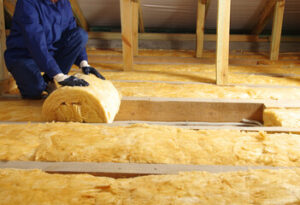Purchasing a house is one of the biggest financial investments you will ever make. Aside from ensuring you can afford the mortgage, it is important to consider all of the hidden costs involved in buying a home.

Lenders will take into account your income, savings and debts to determine how much of a loan you can get. For professional help, contact Altitude House Buyers.
One of the most common reasons REALTORS(r) ask home buyers to get pre-approved is to establish how much a buyer can afford in terms of mortgage financing. It helps buyers narrow the search for homes and prevents them from viewing properties they cannot afford. It also means they can move more quickly when they find their dream home, giving them a better chance of snagging it before someone else does.
The process involves sharing tax returns, paystubs and bank statements with a lender along with a credit report. The underwriter will then examine those documents to get a complete financial picture and determine how much of a house the buyer can afford to finance with a loan. It may also determine the type of loan for which the buyer qualifies as well as the amount of money required for a down payment.
This process is more involved than pre-qualification, which is usually done over the phone and relies on the information the applicant provides. It can take longer, especially if the underwriter flags red flags like high debt levels or late payments on existing loans. It is important for the home buyer to understand the difference between pre-approval and pre-qualification so they can make the most of their time shopping and not waste it on homes that are out of their price range.
Home buyers who have been pre-approved also have more bargaining power when making an offer on a property. It shows the seller that they are a qualified buyer who has the financing to close on the transaction, which is important in today’s competitive market. Sellers want to avoid having a deal fall through at the last minute because of problems with financing.
It is best for the home buyer to keep their mortgage pre-approval active until they find a property that they want to purchase. This way, the home buyer can be sure that their mortgage is approved and ready to go when they are ready to make an offer. The mortgage pre-approval will expire after 60 to 90 days, so it is a good idea for the home buyer to talk to their lender in advance about renewing it.
Finding the Right Agent
Buying a home requires more than just picking out a location and putting down an offer. The process is often complex and time-consuming. A qualified real estate agent can provide valuable support throughout the journey. Homebuyers can interview several agents to determine which professional is the best fit for their needs. A good buyer’s agent will explain how they work with buyers, and will also provide complete agency disclosures as required by the law.
A good homebuyer’s agent will work with a buyer to narrow down the properties on the market and schedule visits for interested parties. They can help a buyer find the right property that fits their lifestyle, as well as their investment goals. They can also provide insight into the local market, including things like recent price increases or declines and zoning changes that may impact a buyer’s plans. They can also help a buyer negotiate a price, and will be knowledgeable about a variety of financing options.
While it is possible to buy a home without a mortgage, most people do use financing when they purchase their homes. Getting preapproved for a loan is an important first step that can help avoid spending time viewing properties that are out of a buyer’s budget range. It also lets sellers know that a buyer is serious about the property and won’t be likely to back out of the deal after inspection.
When touring a property, it is important that homebuyers keep their emotions in check. Negative comments or expressions of excitement can hurt a homebuyer’s ability to make an offer on a property. It is especially important not to insult a home’s current owners or their decorations when the homebuyer’s agent is present.
Once a homebuyer has found the property they want to purchase, they can work with their real estate agent to submit an offer. This can involve a lot of negotiating, and homebuyers should be prepared to make offers above the asking price in order to give themselves a chance at winning the property. During this process, it is important that homebuyers remain calm and communicate effectively with their real estate agent.
Getting Your Offer in Writing
When you make a formal offer on the home, it’s important to get all of the financial details down in writing. The letter to the seller will help to strengthen your bid against other buyers who may be vying for the same home. The letter can include information about your financial stability and how much you’re willing to pay for the home. The letter can also be an opportunity to build rapport with the sellers, which could help you in the future when it comes time to negotiate the final price.
Start the letter with a personal touch – using the seller’s first name and making it sound like a friendly note from a friend. Then, write a brief description of yourself and your family. Explain why this home is a good fit for you and what your lifestyle will be like in the property. This will help to create an emotional connection that can be very powerful in a competitive real estate market.
If the home has a special meaning to the sellers, such as being their first house after having children or a place where they’ve attended church or a certain type of school, you can use this information in your letter. However, it’s important to avoid discussing any negative aspects of the home, such as its location or how much work you would need to do. These can be very off-putting to potential sellers and can put them in a defensive position.
Reinforce your seriousness – Sellers don’t want to see their dream home fall through because of financing issues. If you can mention that you’re pre-approved for a loan and have already made the necessary down payment, it can give the sellers peace of mind. This will also show them that you’re a serious buyer who can move quickly to close the deal. Keep the letter short – most sellers don’t have the time to read a lengthy offer letter, and they might assume that you’re simply trying to increase your bidding war. The goal of the letter is to build a unique relationship that sets you apart from the competition, not to bore them with your life story.
Getting a Loan
Homebuyers must take a number of steps before they are ready to buy a house. These include getting pre-approved for a mortgage, finding a real estate agent, and preparing the home for inspection. Once all of these steps are completed, the lender will give the buyer the loan for the house. If the borrower is unable to pay the loan, the lender may repossess the home. In 2021, the average time to close a loan was 49 days.
To qualify for a mortgage, buyers must have adequate income and credit scores. Borrowers must be able to afford monthly payments on the mortgage, plus property taxes and insurance. Lenders typically look for loans that are two to three times the borrower’s gross income. They also consider the borrowers’ level of recurring debt and other factors. A borrowers’ credit score is important because it affects their interest rate and the amount of money they can afford to borrow. Borrowers should check their credit report to see if there are any mistakes that could lower their score.
Many first-time homebuyers have difficulty saving enough money to afford a down payment. The good news is that there are a number of programs available to help them with this. Some of these programs offer a grant to match a homebuyer’s lump sum savings. Others provide low-interest loans with special terms.
Most conventional lenders require a minimum credit score of 620. However, there are a number of ways for borrowers with lower credit scores to prepare for homeownership. These strategies include paying bills on time and reducing debt.
The home buying process can be long and drawn out, but it’s essential for borrowers to stay in contact with their mortgage lenders to ensure the loan is moving forward on schedule. It’s also vital to review all documents thoroughly, particularly those pertaining to the loan’s closing.
If you’re thinking about buying a home, it’s best to consult with a qualified mortgage professional who can discuss the different loan options and help you decide which one is right for you.



